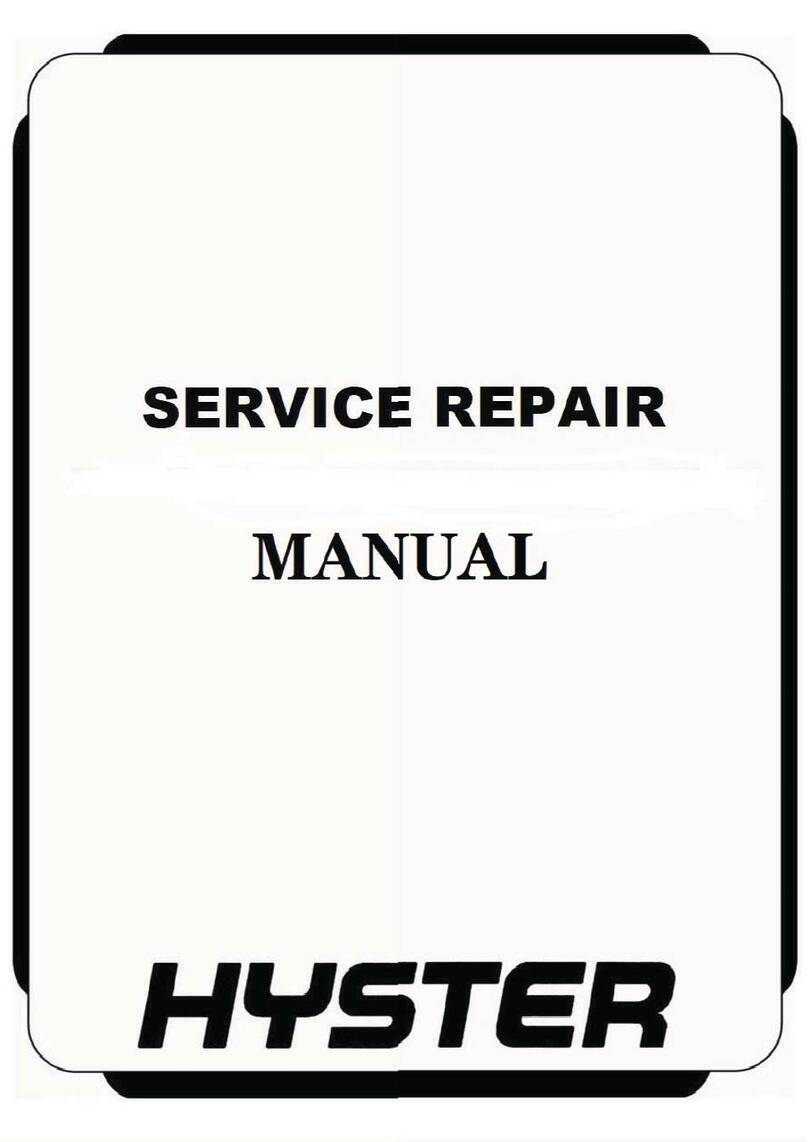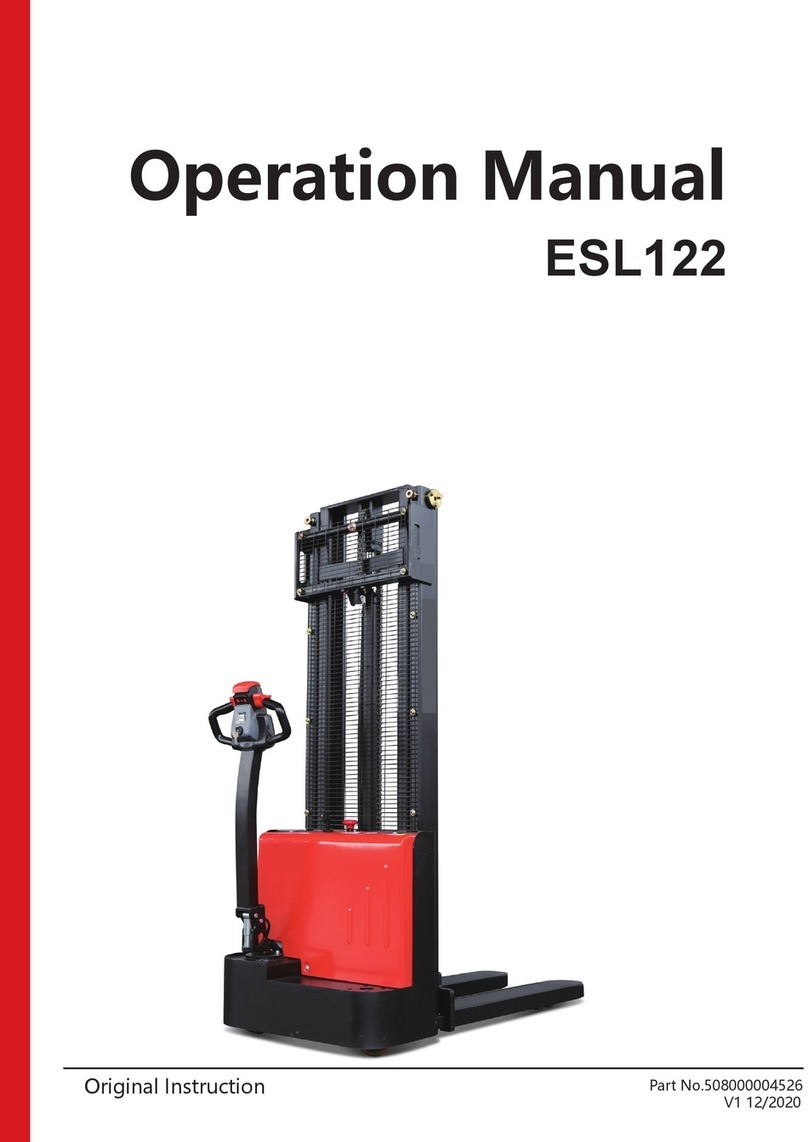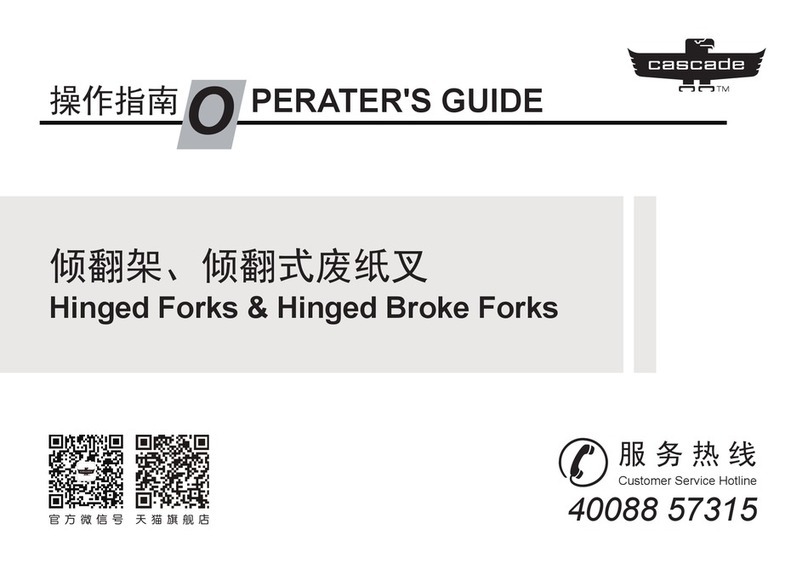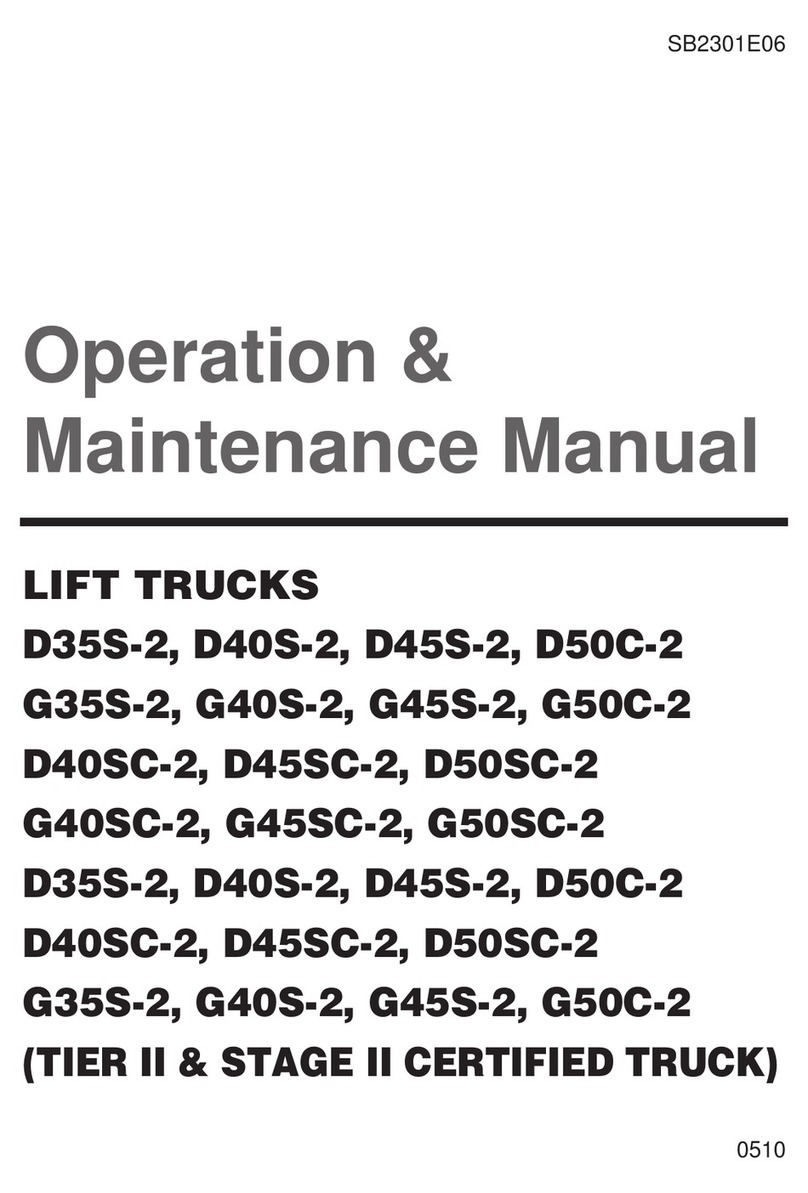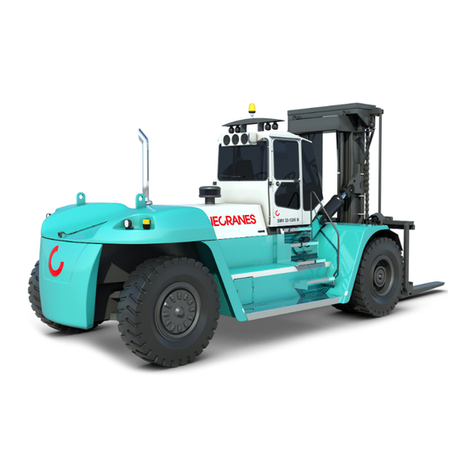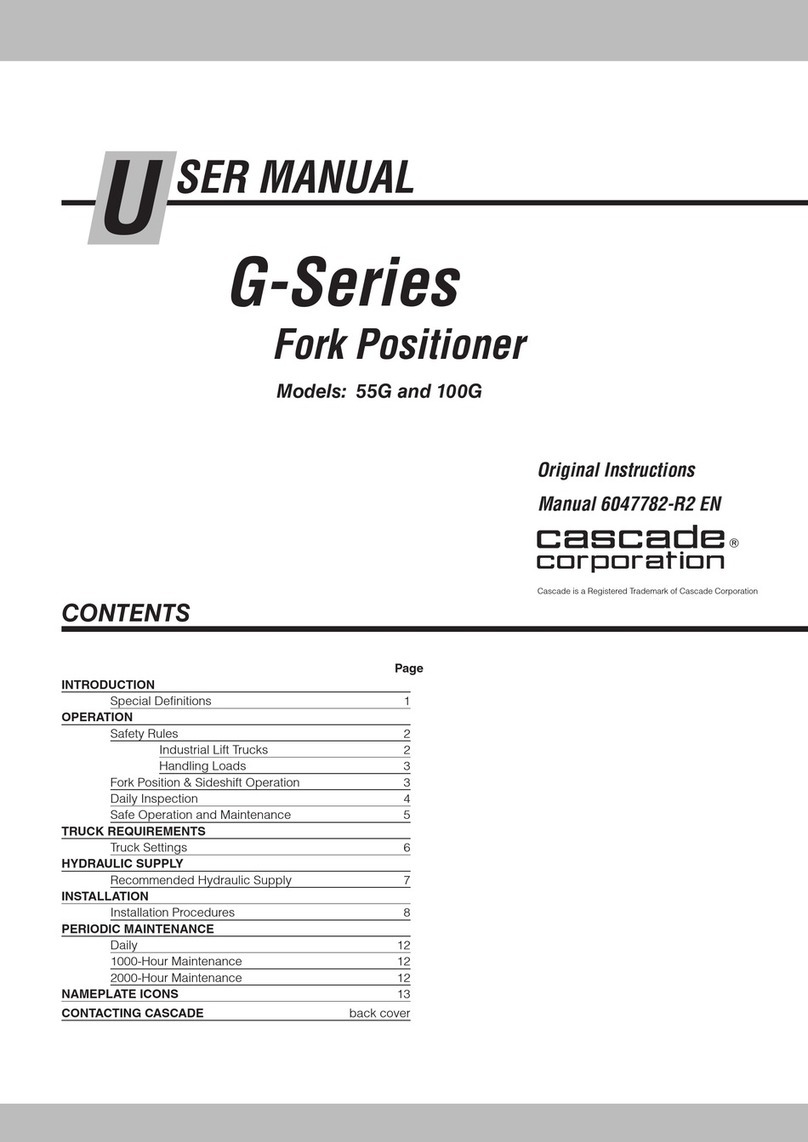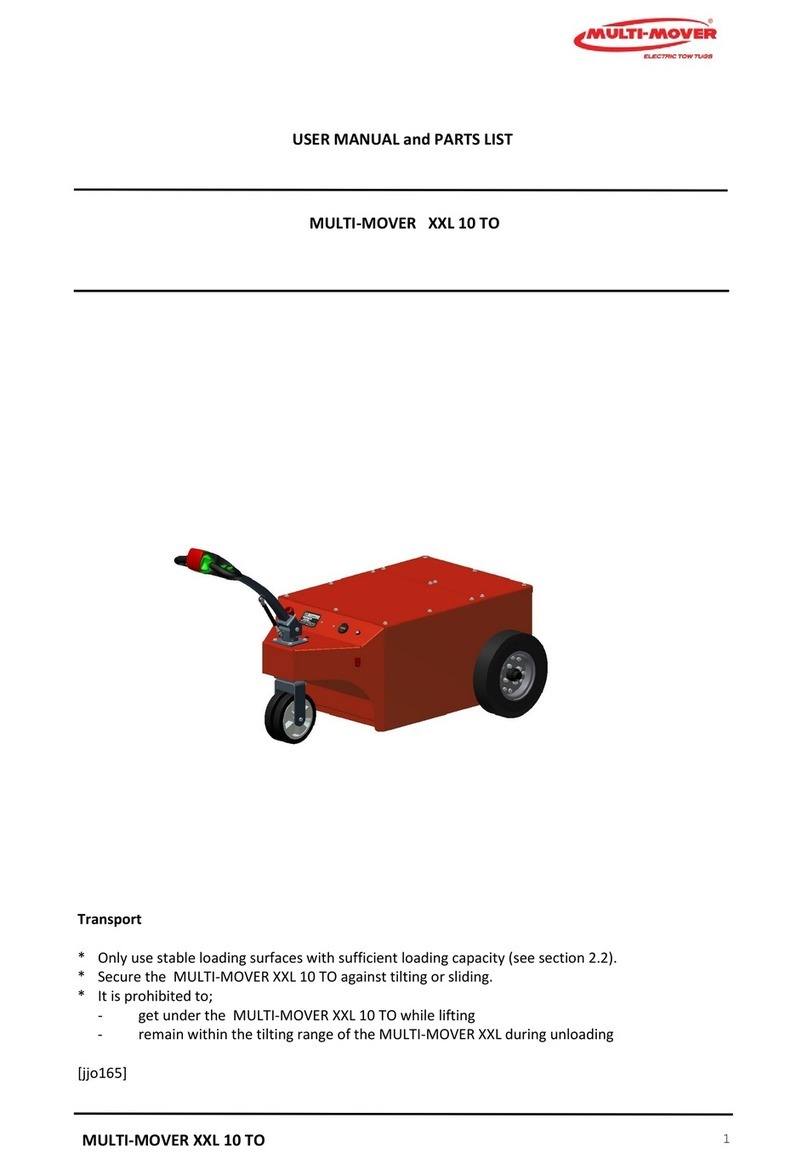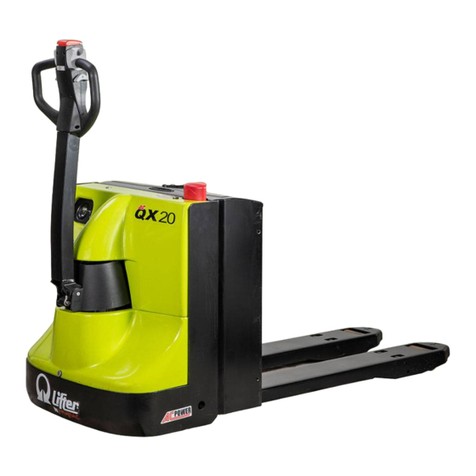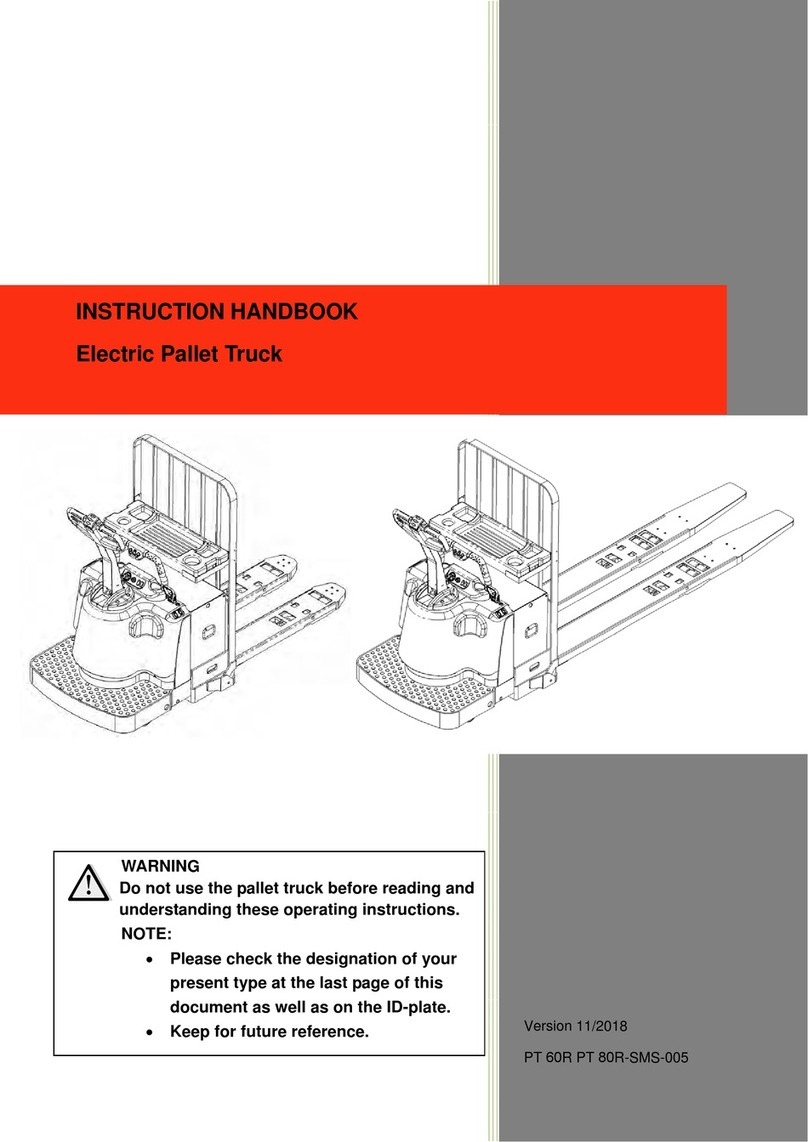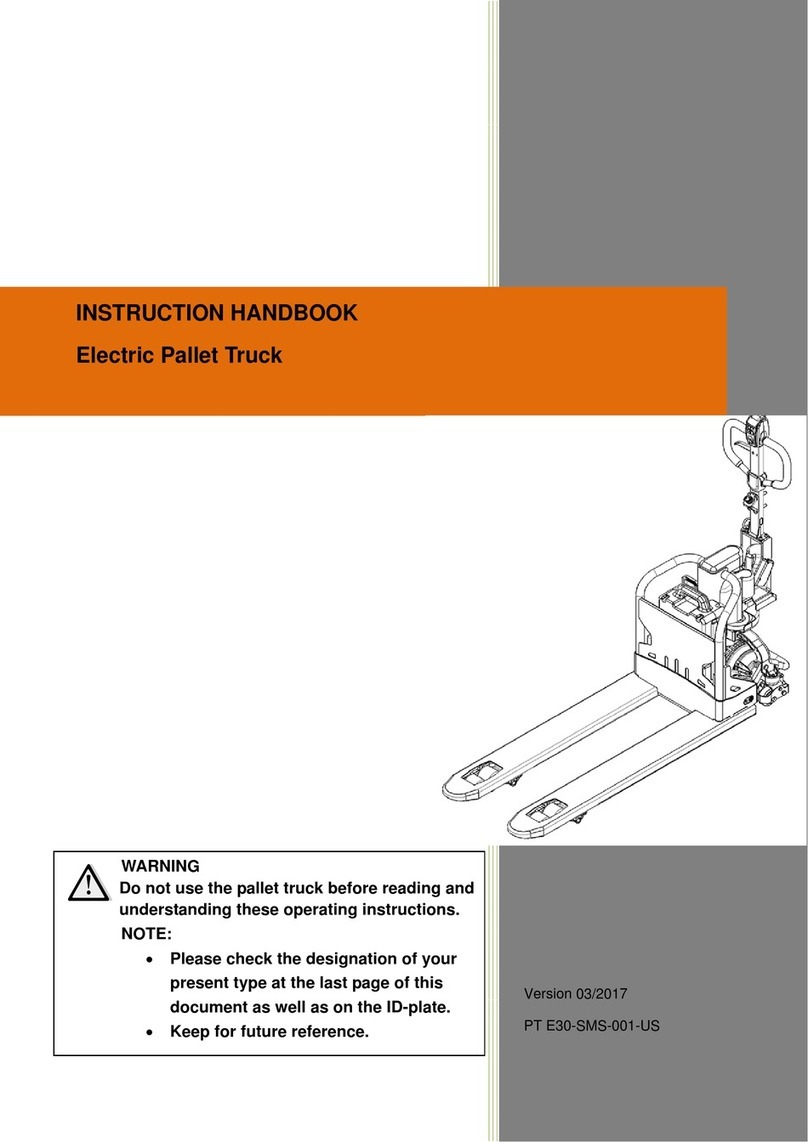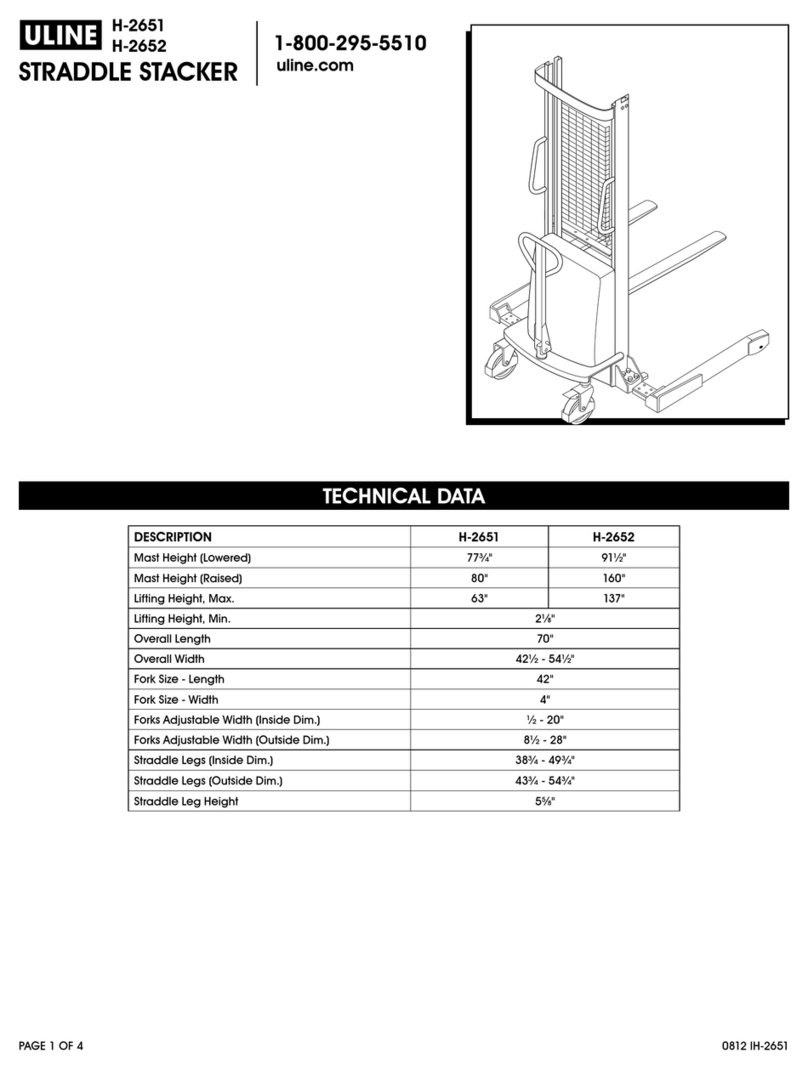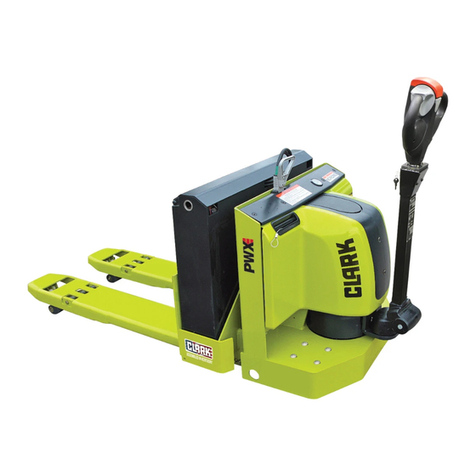Starke EcoMaxx Series User manual

STÄRKE MATERIAL HANDLING GROUP
402 Allanburg Road · Thorold, ON L2V 1A4 · Canada
TOLL FREE 877-435-4352 · FAX 905-227-2072
www.starkecanada.com · www.starkeusa.com
Stärke EcoMaxx Series Forklifts
ECO-FG/FD 18/20/25/30/35 PA MODELS
REVISION EXOPR-01 2012
OPERATION MANUAL


INTRODUCTION
The purpose of this manual is to offer owners, operators, and service technicians a complete understanding of the safe operation and maintenance of Stärke
EcoMaxx Series diesel and gasoline model forklifts. And additionally to help avoid, and provide solutions to, potential issues that may occur during operation.
The safe and efficient operation of a lift truck requires skill and alertness on the part of any operator.
To develop the skills required the operator must:
Acquire the proper training and certifications required for the operation of the forklift.
Understand the capabilities, limitations, specifications and rules of the forklift prior to operation.
Become familiar with the structure and layout of the forklift.
Read and understand the warnings and operating procedures in this manual.
Stärke Material Handling Group strongly suggests that you read this manual in its entirety:
Optimized efficiency begins EcoMaxx forklift. In addition, a qualified person experienced in lift truck operation, must guide every new operator through operation
lessons before they operate the lift truck independently.
Stärke Material Handling Group puts operator safety at the core of model designs and operations, observation of the safely rules and recommendations contained
in this manual can prevent potentially fatal accidents. Keep a copy of this manual with the forklift at all times and ensure that all operators review the contents of
this manual on a regular basis. If a replacement manual is required, contact Stärke Material Handling Group or your local Stärke dealer immediately to request a
replacement.
NOTE: Stärke forklifts are designed for single person operation only.
NOTE: Stärke forklifts are not intended for use on public roads. It is an on-site machine and inappropriate for long-distance road travel.

NOTE: Incorrect operation and maintenance of the forklift can be dangerous and lead to injury.
The safety practices and preventative measures outlined in this manual apply only if the forklift is used for its intended purpose inside of the outlined
capacity and limitations. Should the forklift be used for any other purpose than the intended function the operator is responsible for their own safety
and the safety of others and property.
Additional information that describes the safe operation and use of forklifts is available from the following sources:
Employment safety and health standards or regulations.
Safety laws, codes, and standards.
Publications from government safety agencies, government insurers, private insurers and private organizations.

TABLE OF CONTENTS
CORRECT OPERATING PROCEDURE .............................. 1
Load and Vehicle Stability........................................................................2
Load Capacity Chart....................................................................................... 2
Handling a New Forklift ...........................................................................5
Engine Starting and Post-Starting Procedures..........................................6
After Starting ................................................................................................. 6
Lift Cylinder Warm-Up....................................................................................6
Vehicle operation.....................................................................................7
Take-Off ........................................................................................................7
Gear Shifting.................................................................................................. 7
Steering ......................................................................................................... 7
Picking-Up Loads...........................................................................................7
Unloading ......................................................................................................8
Stopping and Parking..................................................................................... 8
Road or Surface Conditions .....................................................................9
Snowy or Frozen Surfaces..............................................................................9
Handling in Hot Weather................................................................................. 9
Cold Weather Vehicle Handling....................................................................... 9
SAFETY, TRANSPORTATION & MAINTENANCE ...........11
Conditions for Normal Vehicle Use .........................................................12
Work Environment ....................................................................................... 12
For Engine-Powered Forklifts....................................................................... 12
For Electric-Powered Forklifts ...................................................................... 12
Work Environment Hazards ...................................................................13
Slippery Road Surfaces................................................................................ 13
Rough Ground.............................................................................................. 13
Lighting ....................................................................................................... 13
Noise........................................................................................................... 13
Conditions That Apply When Attachments Are Used ..................................... 13
Information on Operating the Forklift .....................................................14
Qualifications and Training .......................................................................... 14
Fundamental Safety Guidelines.................................................................... 14
Fuel.......................................................................................................16
Fuel Types................................................................................................... 16
Handling of Fuel........................................................................................... 16
Refuelling .................................................................................................... 16
Shipping, Loading and Unloading the Forklift......................................... 18
Lifting the Forklift ........................................................................................ 18
Assembling the Forklift and Mounting Attachments...................................... 19
Towing the Forklift and Moving Incomplete Forklifts..................................... 19
Leaving the Forklift Idle and Long term Storage.....................................20
Care of the Engine Compartment ................................................................. 20
Maintenance of the Brake System ............................................................... 20

Maintenance of the Hydraulic System .......................................................... 20
Battery Care.................................................................................................20
Drive System Maintenance........................................................................... 21
Inspection of Industrial Trucks While In Storage ...........................................21
Service Requirements ...........................................................................27
Genuine Starke Replacement Parts .............................................................. 27
Safe Work Practices..................................................................................... 27
Safety Equipment and Warning Labels ......................................................... 28
Handling the Battery Safely .......................................................................... 29
Notes on Other Hazards ...............................................................................30
OPERATION SAFETY TIPS ............................................. 33

1
CORRECT OPERATING PROCEDURE

2
LOAD AND VEHICLE STABILITY
Let us compare the way we lift a load with the way a forklift does. A light object can be
picked up from just about any position, but to pick up a heavy one you must bend down,
lowering your hips and arms. The heavier the object, the more bending you must do. The
same is true of a forklift.
As seen from the diagram, the forklift front wheels act as a fulcrum upon which the load on
the rear wheels (counterweight) is counterbalanced by the load on the forks. Thus, car
should be taken not to disturb the balance in relation to the load center.
Even if a load less than the maximum is set far forward on the forks, or if a load exceeds
the specified allowable limit, the rear wheels will tend to float and the steering wheel will be
hard to turn. This the most dangerous condition for a forklift.
Because of this principle of leverage, a forklift's capacity is always specified by giving not
only the maximum weight it can lift, but also the maximum distance between the center of
the weight and the back of the forks. This is called the load center distance.
LOAD CAPACITY CHART
Load capacity chart shows exactly how the truck’s load capacity is reduced if the load
center distance is greater than normal.
The curves are given for several different maximum lift heights. The higher the lift, the
lower the allowable load.

3
LOAD CAPACITY
Load capacity is the maximum weight of material that can be handled on the forks al a
specific load center.
LOAD CENTER
Load center is the distance between the center of weight of load and the back of the forks.
MAXIMUM FORK HEIGHT
Maximum fork height (MFH) is the highest position of the forks with the mast in a vertical
position.
HOW TO READ THE LOAD CAPACITY CHART
The load weights 2500 kg well below the normal capacity of a truck with 4.5m mast.
However, the load center is 100cm from the back of the forks. On the chart, trace up from
the 100cm load center to the upper load curve and then across to the capacity scale.
According to the chart, the maximum weight that can be lifted at a 100cm load center is
approximately 1800kg, and so our assumed load of 2500kg is too heavy. It must be broken
down.

4
HOW TO READ THE SPEC PLATE
The load capacity is engraved on the spec plate. Make sure of the load center and capacity
before starting the operation.
1. Vehicle Type
2. Special Vehicle Type, Attachment
Type
3. Frame No.
4. Vehicle Weight
5. Mast Lifting Height
6. Front Tread
7. Tire Size
8. Air Pressure
9. Year of Manufacture
10. UL Specification
11. Load Capacity
12. Load Center
This manual suits for next models
10
Table of contents
